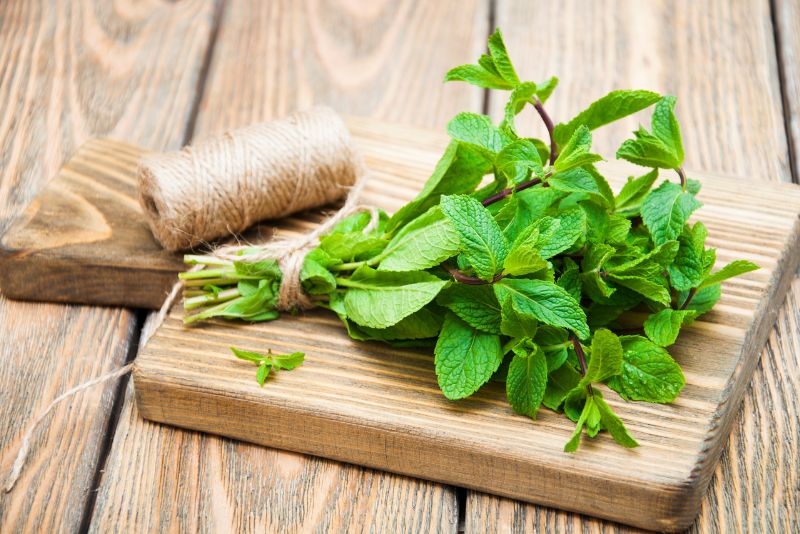Mint is a popular herb that can be used in many dishes, drinks, and desserts. It adds a fresh and slightly sweet flavor that can be difficult to replicate with other herbs or spices.
However, there are times when mint isn’t available or you simply want to try something different. In those cases, there are mint substitutes that can be used in its place.
15 Best Substitutes for Mint
The best substitutes for mint are dried mint and basil. You can also use marjoram, parsley, and peppermint extract as a mint substitute in most recipes.
Continue reading to know how and where you can use these ingredients in place of mint.
1. Dried Mint
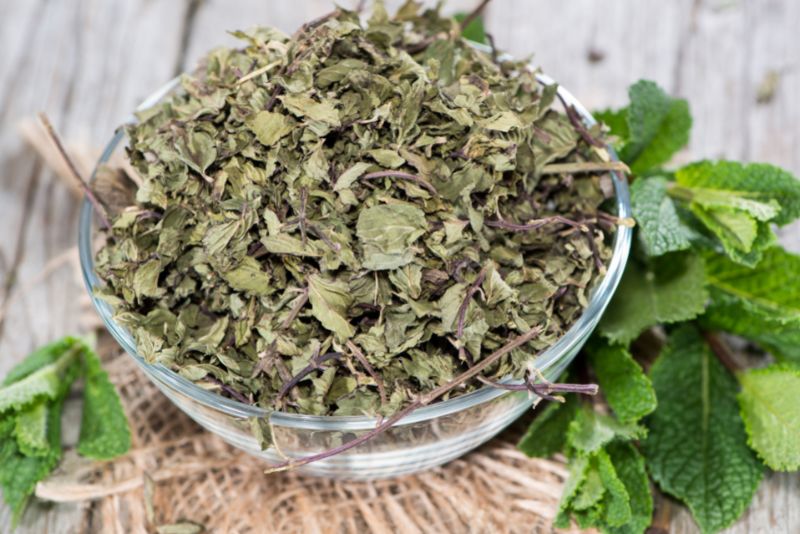
Dried mint is a great substitute for mint extract in various recipes – especially those that call for fresh mint. This herb can be used as a garnish or flavoring in foods, making it the perfect choice if you are looking for an all-purpose substitute.
Mint tea and health drinks made with dried mint are also very popular, thanks to their refreshing taste.
If you’re like most people who love a fresh mint flavor but find it hard to get your hands on it, dried mint would be the best option!
2. Peppermint Extract

Peppermint extract is a versatile herb that can be used in many different dishes and drinks. It has a minty flavor that is similar to the one of traditional mint extract.
Peppermint extract is one of the best options to use in place of mint in dessert recipes. Although it tastes best in sweet foods, peppermint extract can be used in some major dishes as well. While slightly spicier than mint, peppermint has a comparable minty flavor. Both fake and natural peppermint can be found on the market.
Additionally, it can also be used to make herbal tea or tonic water. While peppermint extract may cause stomach upset for some people, it’s still an excellent option for flavoring recipes and drinks. Keep in mind that the effects will vary from person to person so always test before using it in large quantities or on sensitive tummies
3. Basil

One of the most popular and widely available mint alternatives is basil. Basil will keep the freshness of the mint but it will also give your cuisine a sweet peppery flavor.
To achieve the same fragrant strength, though, you will need to use a little bit more basil than you would use mint. Therefore, use two teaspoons of basil in place of the one teaspoon of mint that you were going to use.
Basil is one of the most versatile herbs around and can be used in many dishes – perfect for those with food allergies or dietary restrictions. It has a minty flavor and aroma, making it an ideal substitute for mint in many recipes. Basil also makes a great addition to salad dressings, sauces, smoothies etcetera. So whether you’re looking for fresh flavor or versatility in your cooking repertoire, basil is definitely worth trying out!
4. Marjoram
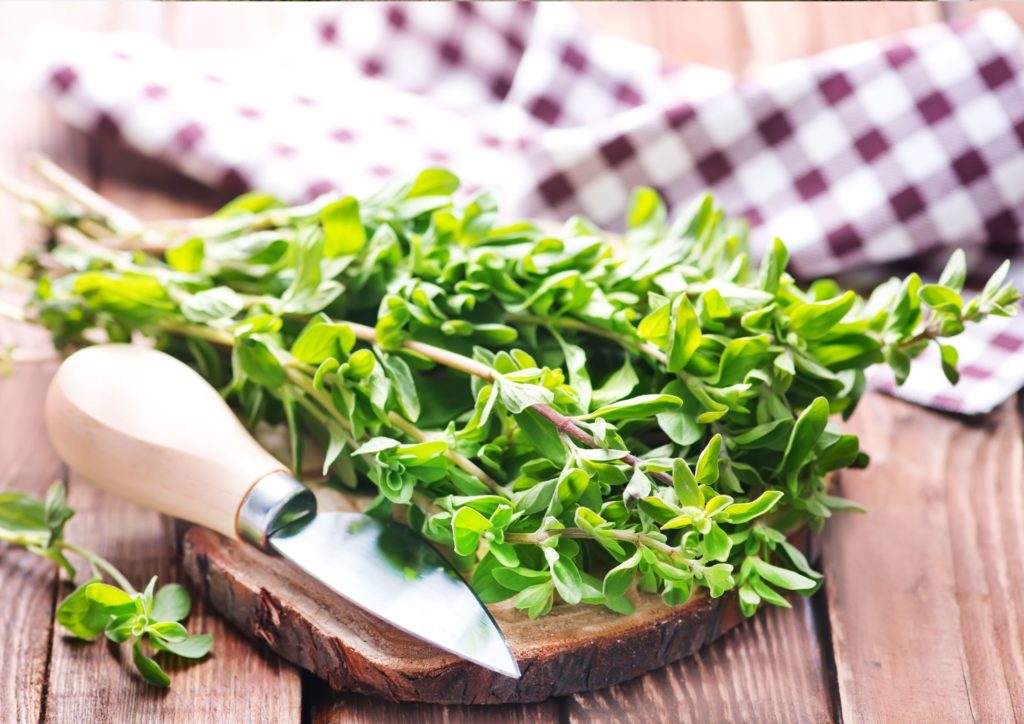
If you’re looking for a minty fresh herb to add flavor and aroma to your food and drinks, marjoram is the perfect option.
You may give your cuisine a citrus and pine flavor that is equally as delightful as the minty one by substituting marjoram for the mint. Because it has a flavor similar to oregano, some people believe marjoram to be quite close to it.
This is simple to cultivate indoors in a pot, but you can also buy it fresh or dried from supermarkets. You could discover marjoram to be more potent than mint itself due to its pungent flavor. Be cautious when measuring because it is simple to add too much flavor.
It has a sweet, herbaceous aroma that can be used in many dishes – from salad dressings to ice cream toppings. Growing marjoram indoors is easy – just place it in an east- or south-facing window where it will get plenty of sunlight. You can also find this herb at most grocery stores.
5. Parsley

Parsley is a versatile herb that can be used in various dishes. If you don’t have access to mint, parsley can also be used as a substitute.
It has a strong flavor and can add an interesting flavor to any dish. Sometimes, dried parsley is also available at stores.
So, if you’re looking for something fresh and flavorful to add to your recipe collection, parsley should definitely top the list!
6. Cilantro

Cilantro is a popular herb that can be used in various dishes and beverages. It belongs to the Lamiaceae family, which also includes mint. This aromatic herb has a strong flavor and can be fresh or dried.
You can also use cilantro or coriander as a versatile alternative to mint in a variety of recipes. You might have to use more of it because it doesn’t have a strong flavor like mint. However, it will improve the flavor of your food’s other ingredients. Coriander is available fresh, dry, and in powder form. The fresh plant is far more delicious than the dried plant.
It is commonly found in Asian cuisine where it’s used as a substitute for mint, or as a flavoring for food. In addition, cilantro can also be powdered and added to drinks or soups for an extra kick of flavor!
7. Tarragon
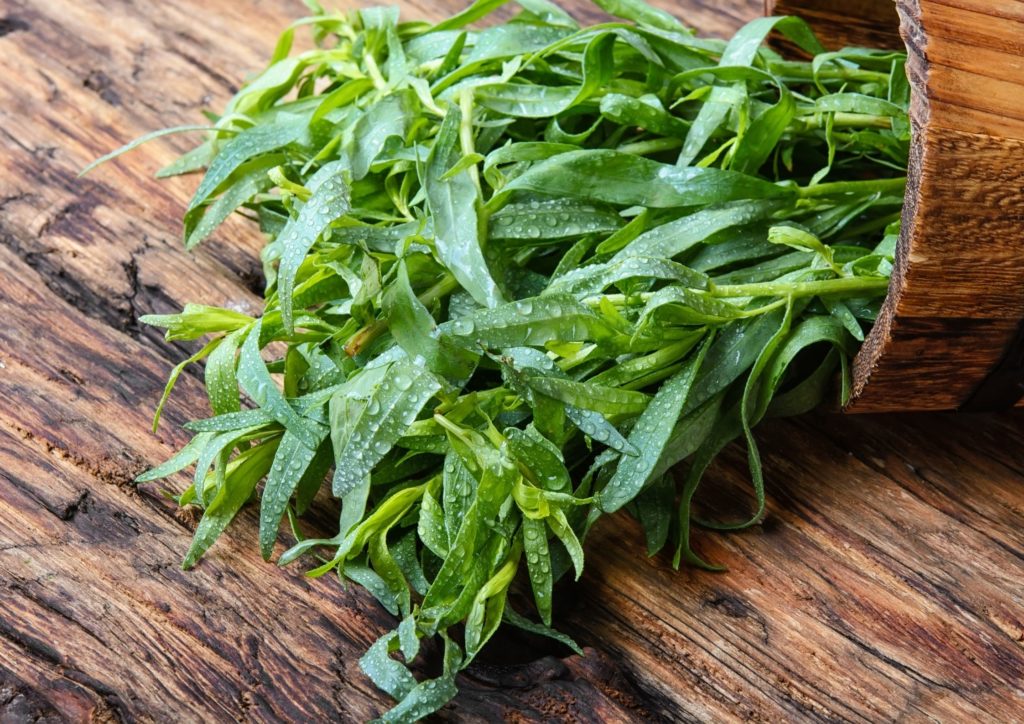
Tarragon is a versatile herb that can be used in many dishes and beverages. Its licorice flavor goes well with most foods, making it the perfect substitute for mint.
Even while tarragon is not the most popular ingredient everywhere, it is certainly one of the most delicious. Although it is a well-known medicinal plant, you may substitute it for mint in a variety of meals. Both soups and many types of meat dishes benefit greatly from the use of tarragon.
Additionally, tarragon has a slightly potent taste which makes it an excellent flavoring agent for tea, coffee, ice cream etcetera. It can also be used as an all-purpose cleaner – just mix it with water and scrub it!
8. Rosemary

Rosemary can be used in many ways. It has a strong flavor and aroma, making it an excellent substitute for mint. Additionally, rosemary is also great for seasoning food – especially lamb and fish dishes.
This fragrant plant offers several advantages in addition to a flavor that is irresistible. This plant, sometimes known as anthos, belongs to the Lamiaceae subfamily of mints. As long as you don’t use too much of it, the rich flavor of rosemary can take the place of mint. In sweet dishes, it won’t have the same impact, but it’ll be fantastic in soups and entrees.
It can be used to make teas, aromatherapy, herbal remedies, etc. Furthermore, rosemary is a tough plant that thrives in any soil type – making it the perfect choice for indoor use.
9. Herbal Mint Tea
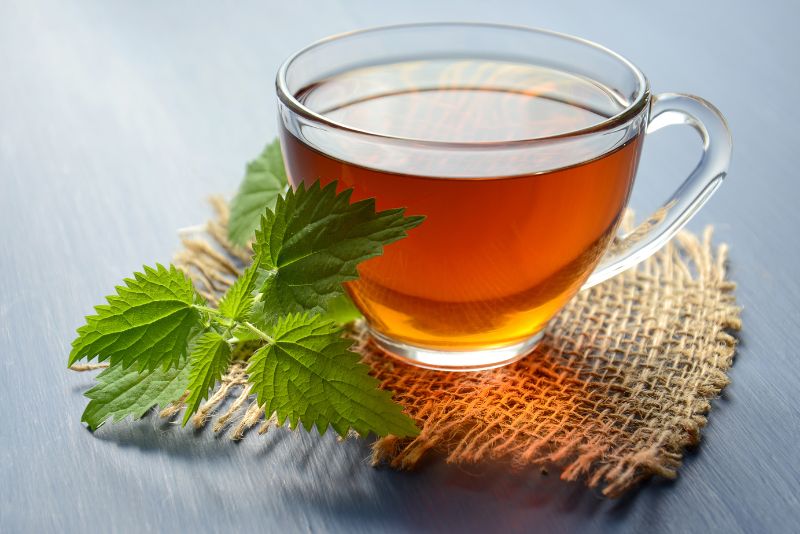
Herbal mint tea is a great substitute for the popular mint flavored drink and it tastes great! Not only does it taste good, but herbal mint tea is also refreshing and perfect to start your day.
Mint tea is one of the most practical mint replacements. You can drink herbal mint tea simply or in a variety of mixes with other herbs. This can be one of the greatest mint substitutes, depending on the recipe you wish to use it in. Choose the basic dry mint variety of the tea if you wish to utilize herbal mint tea instead of fresh mint.
Add herb mint tea to your breakfast routine or use it as an ingredient in recipes – try blending it with other flavors to create unique concoctions. Whether you’re looking for a quick fix or something special to sip on throughout the day, herbal mint tea will be sure to please!
10. Lemon Extract

Lemon extract can be used as a substitute for mint extract in many recipes. It has a similar flavor and can be used in place of mint extract to give your dishes that fresh minty taste.
You won’t taste any mint in your dish or drink if you use lemon extract or flavoring, but you will adore the freshness it adds. There are several different kinds of lemon extract. Lemon peel from organic lemons, lemon juice, or all three can be used. Enjoy a distinct and rich flavor by adding it to your recipe in the same amount that you would add the mint!
Additionally, the lemon extract is also effective at removing odors and freshening up the air around your house. You can find lemon extract at most grocery stores or online retailers.
11. Oregano
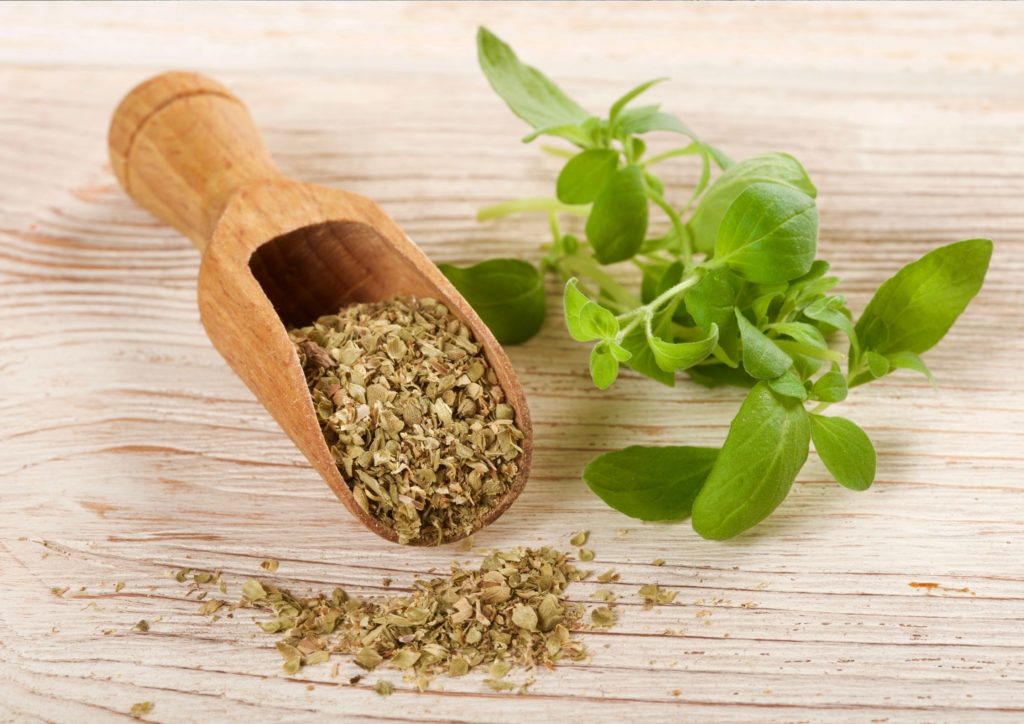
Oregano is a herb that has many uses, including in the kitchen. It can be used as a substitute for mint because it has a similar flavor and aroma, and it is also known to have health benefits.
Oregano is a member of the Lamiaceae mint family, just like rosemary, and it works well in several cuisines in place of mint. Additionally, it’s not difficult to locate oregano, whether it’s fresh, dried, or included in a variety of seasoning blends. Since it already has a strong flavor, you won’t need to add much to enjoy it.
Oregano is especially good for reducing heart disease risk and fighting inflammation. Always read the ingredients before using oregano, as some versions may contain chemicals that could harm your health.
12. Dill
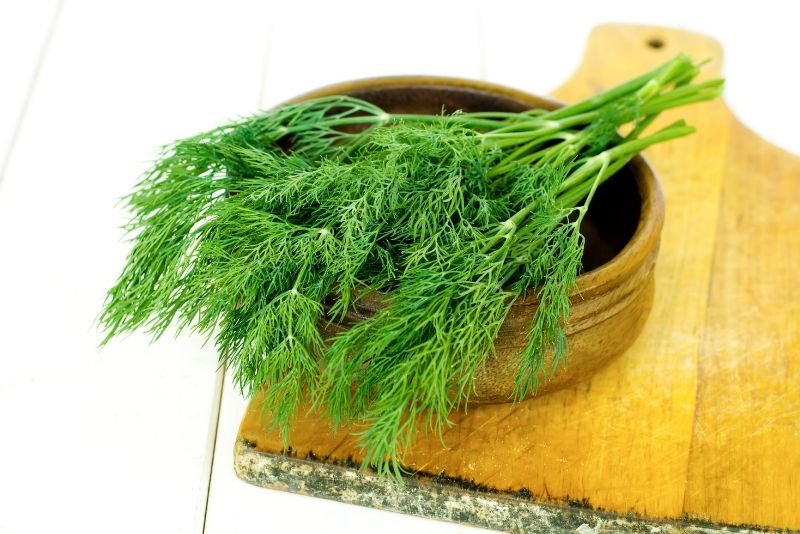
If you are looking for an alternative to mint, Dill is a great option! Dill has a similar flavor and aroma as mint, making it the perfect substitute in many recipes.
It can be used in place of mint in tea and desserts alike – giving you more versatility when it comes to flavoring your dishes.
Additionally, dill is also known to have numerous health benefits such as reducing inflammation and helping lower blood pressure levels. If mint isn’t the herb for you or if you want something fresh tasting on occasion, choose dill!
13. Sage

If you’re looking for a minty flavor in your tea, coffee, or other drinks, sage is the perfect herb. It has a strong flavor that’s great for flavoring dishes – add it to soups and stews for an intense flavor.
Sage can also be used in place of mint in many recipes – try baking with it instead of peppermint extract! Sage is usually easy to find at most supermarkets and grocery stores – just look for the herbs section.
So whether you’re cooking up some delicious meals or just need an extra boost of freshness in your room, sage will have you covered!
14. Thyme

Thyme can be used interchangeably with mint in many recipes. It has a similar flavor and can be substituted for mint without the need to adjust the recipe too much.
In addition to this, thyme is also a good source of antioxidants and vitamins, making it healthy to eat.
Try substituting thyme in your favorite recipes and see how it tastes and behaves!
15. Lemon Balm
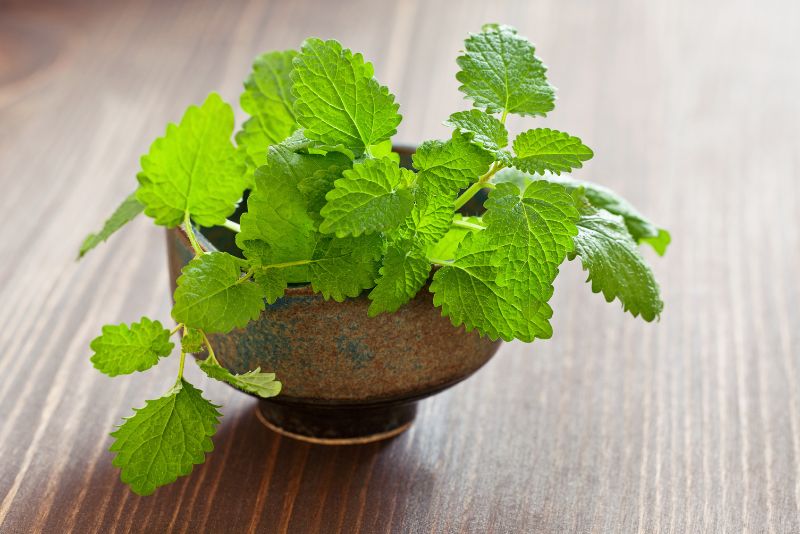
Lemon balm is a great substitute for mint and can be used in various ways – as a tea, tincture, or oil.
It has a strong scent and healing properties, making it perfect for use in different situations. It is also an immune booster and helps to fight against anxiety and depression.
As lemon balm is readily available at most health stores, it can be used as a substitute for mint fresh or dried.
How Does Mint Taste Like?
Due to the menthol in the herb, the major flavor profile of mint is a mildly sweet taste and a chilly sensation.
Frequently Asked Questions
1. What Herb is similar to mint?
Basil is a popular herb that is similar to mint in many ways. Both basil and mint are great for flavoring food, removing odors, and providing relief from cold and flu symptoms.
Additionally, basil and mint both grow best in warm climates and can be found in many parts of the world. Other herbs that may be similar to mint include thyme, savory, sage, rosemary, lavender, and lemon balm.
2. Can I use parsley instead of mint?
Yes, parsley is a great substitute for mint in recipes that call for the herb. Parsley has a similar flavor profile as mint and can be used interchangeably in most recipes. Additionally, basil may also be a good substitute for mint if you’re looking for an herb with stronger anti-inflammatory properties.
3. Is basil the same thing as mint?
Basil and mint are both members of the mint family, but there are some key differences between them. Basil is less sweet and has a more savory taste, while mint is sweeter with a more herbal flavor.
Basil can also be used in place of mint as an ingredient in many dishes – it’s great for flavoring soups and sauces. If you’re looking for something to add freshness to your breath, try basil instead of peppermint extract or toothpaste.
Basil and mint are cousins, sharing many similar characteristics such as having a strong odor and being used as herbal tea. Basil is typically used in cooking or to make refreshing drinks, while mint is more commonly used in medicinal properties.
